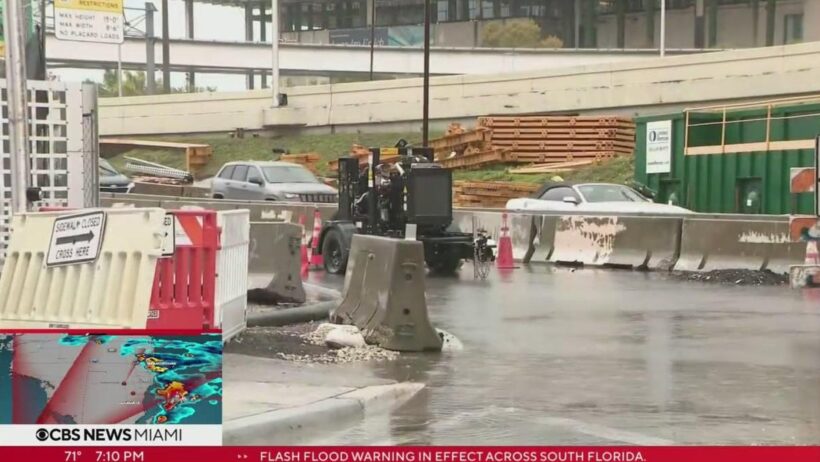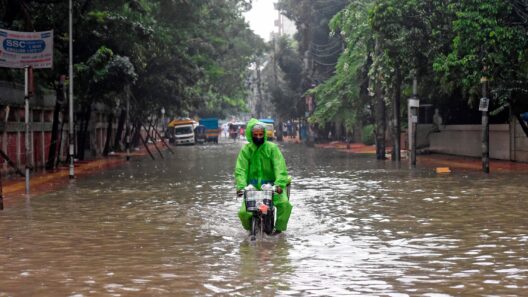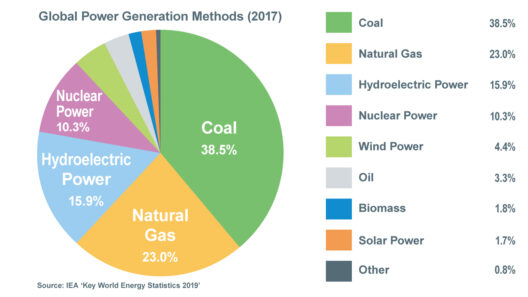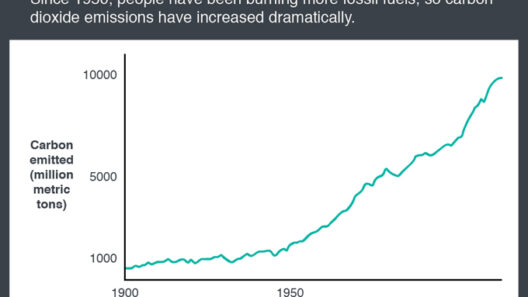As Miami navigates the waves of climate change, the vivid imagery of streets transformed into waterways becomes more prevalent. The question arises: Are the streets flooding in Miami due to rising seas? To comprehend this phenomenon, one must delve into the intricate relationship between anthropogenic climate shifts and urban geography. The city has been acutely affected by both a rising sea level and increasingly intense rainfall, a dual threat that bears grave implications for its future.
At the heart of this discourse lies the concept of sea level rise. As glaciers and ice sheets melt—contributing copious amounts of fresh water into the oceans—the sheer weight of this accumulation initiates a gradual yet relentless ascent of sea levels. This process can be likened to the gradual filling of a bathtub, eventually reaching a point where the water spills over the edge. For coastal cities like Miami, which are mere feet above sea level, the implications are dire. The threat of inundation is not a distant concern but a current reality.
Miami’s geographical landscape further exacerbates the impact of rising seas. The city is situated on porous limestone, allowing water to seep through the ground and rise up through the soil. During periods of heavy rainfall, this geological feature results in an unfortunate consequence: stormwater no longer finds refuge in the earth but instead floods the streets. The scenario transforms urban infrastructure into ill-fated vessels struggling against an unrelenting tide of water. Residents find themselves confronting an unnerving paradox—despite advanced engineering and urban planning, their streets are becoming navigable channels.
Moreover, the phenomenon known as king tides exacerbates the situation. These naturally occurring tidal events, when the moon and sun align, cause a temporary rise in sea levels that further inundates the coastal areas. When king tides coincide with heavy rainfall, the effects become magnified. Even the most mundane activities—such as attending a neighborhood event or commuting to work—turn into exercises in aquatic maneuvering. The city transforms into an urban lagoon, where the synchronization of rising seas and spring tides draws attention to the increasing urgency of addressing climate impact.
The implications of flooding extend beyond the immediate inconvenience of wet shoes and obstructed roadways. They serve as a bellwether of more extensive ecological consequences. The infiltration of saltwater into freshwater aquifers threatens drinking water supplies, becoming a pernicious antagonist in the narrative of sustainable development. As resources dwindle, the strain on local ecosystems creates a ripple effect, diminishing biodiversity and disrupting habitats. In essence, the flooding serves as a profound illustration of the intricate dance between human existence and nature’s immutable laws.
Urban planners and policymakers are tethered to the pressing need for adaptive measures. The necessity of resilience strategies, from improving drainage systems to implementing green infrastructure initiatives, cannot be overstated. Miami’s approach towards these challenges can be likened to a chess game, where each move must be calculated with foresight. Solutions like permeable pavements, elevated roadways, and enhanced stormwater management systems hold the promise of alleviating some of the burdens imposed by rising seas, yet they require financial backing and innovative thinking.
The visual imagery of streets transformed into rivers, alongside increasingly familiar scenes of individuals wading through high waters, has stirred public consciousness. Awareness campaigns highlight the immediacy of the threats posed by climate change, galvanizing residents to adopt sustainable practices and support environmental initiatives. This collective awakening is a crucial component of confronting the challenges head-on; the more engaged the community, the healthier the ecosystem. It becomes a shared mission to navigate the murky waters of climate crisis.
Furthermore, emerging technologies provide a unique avenue for combating flooding and rising seas. Innovative projects are being tested globally, from high-tech flood barriers to seawalls designed to withstand the force of storms. Utilizing advanced weather forecasting and simulation tools can facilitate proactive planning and more effective emergency response systems. Disseminating such technologies can empower communities, ensuring they not only brace against the tide but learn to coexist harmoniously with their changing environments.
In the midst of these trials, Miami’s identity is deeply entwined with its resilience. The vibrancy of its culture, the rich diversity of its community, and the unique interplay of urban and natural landscapes encapsulate the spirit of a city undeterred by adversity. Miami’s inhabitants are resilient, their unwarranted optimism is crucial in ushering in a new era of environmental stewardship. Activism has burgeoned as individuals and groups come together to advocate for policies that safeguard both the environment and the urban constituents.
In summation, the flooding of Miami streets is an intricate tapestry woven from the threads of rising seas, climate change, and urban inadequacies. It serves as a crucial reminder of the incursion of ecological challenges into daily existence. While the roads may be overwhelmed by water today, the urgency to confront these challenges with innovative solutions remains paramount. The onus lies on all—to transform adversities into opportunities, preserving the spirit of Miami as it braces against the waves of a changing world.








